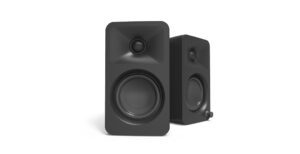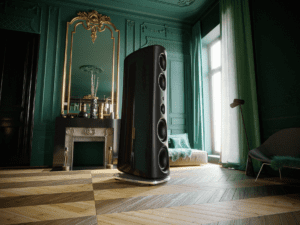Naim Audio NSC 222, NPX 300 and NAP 250 streaming preamp/power supply/power amplifier
- REVIEW
- Jason Kennedy
- Nov 01, 2023
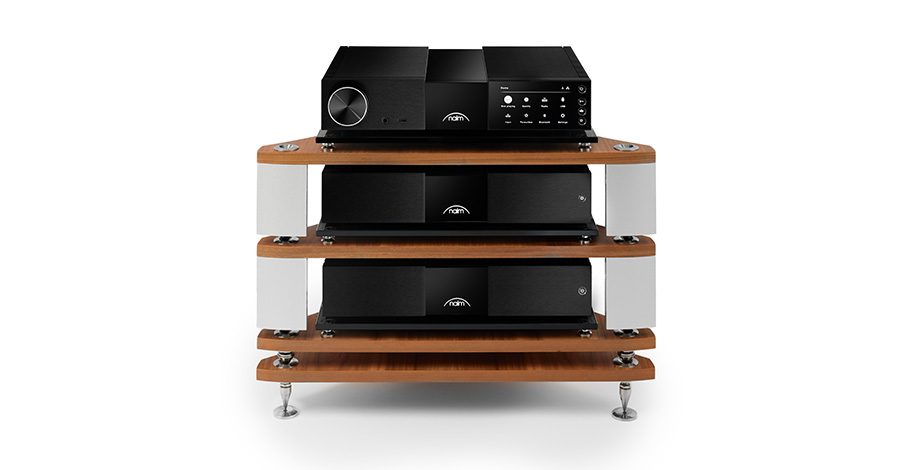
Fifty years is a good innings for a hi-fi company in today’s competitive market. Naim has reached that milestone this year and is marking the occasion with the New Classic series, which replaces the Classic series that was introduced 20 years ago. Don’t underestimate the style factor; Naim may have been making some fairly shiny boxes in its Uniti range but for most of its 50 year tenure, its core products have been fairly plain looking devices; almost hairshirt by the standards of the high end. The first stirrings of this transition were seen in the Statement amplifiers nine years ago and the creator of that look, Simon Matthews, is also responsible for New Classic, his swansong for Naim.
New Classic has been launched with the three products under consideration here; the NSC 222 preamplifier/streamer/DAC, the NPX 300 optional power supply for that product, and the NAP 250 power amplifier. This last name has been in the Naim range since 1975, in many ways it is the definitive Naim power amplifier, increasing in power over the years to today’s 100W design. It inhabits a special place in the pantheon of Naim amps and was last revised in 2015 with the DR upgrade, a trickle down from the Statement S1. In New Classic form the NAP 250 is specified to deliver 100 Watts from each of its two channels.
No anticedent
The NSC 222 has no direct antecedent in the Naim range, the nearest it has come to this product type is the NAC-N 272 but that was phased out several years ago and was not in the same price or performance league. The NSC 222 has both digital and analogue inputs as well as an MM phono stage, on top of this it’s a fully fledged streamer that’s capable of playing from servers and USB sticks as well as a whole host of streaming services such as Tidal Connect and Qobuz. It’s fully up to date with regard to wireless streaming too, accepting Chromecast, Airplay 2 and Bluetooth in its preferable aptX form. The inputs can be trimmed so that all sources have the same broad volume level and digital inputs can be adjusted for lip sync, which would suggest a predilection for AV applications but this is not backed up with an HDMI ARC input.
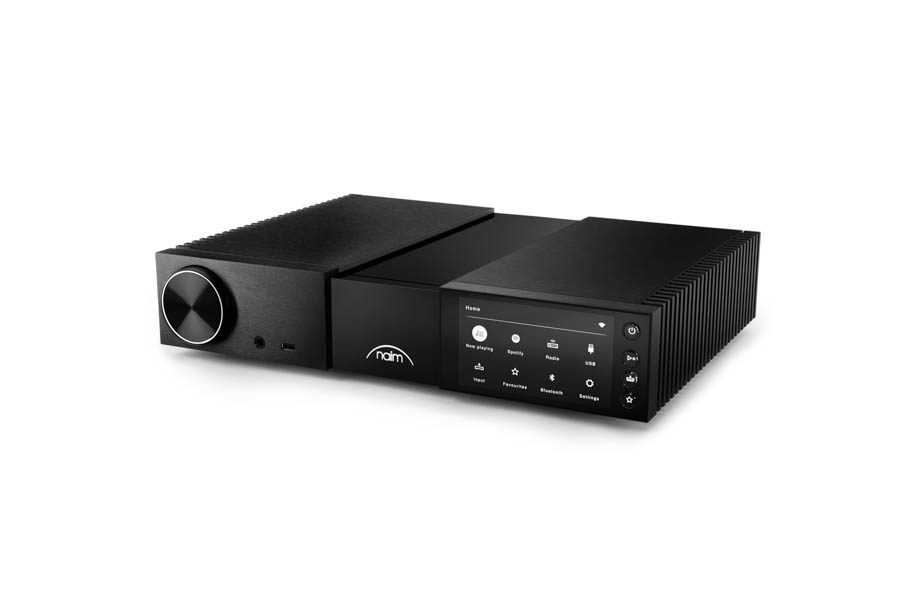
The volume control has the same styling as that on the Statement preamplifier and it turns out that the similarity is more than skin deep. This is not a potentiometer such as you’ll find on the majority of Naim’s past preamplifiers, but an optical encoder for a resistor network. And rather than having 100 resistors for a 100dB range Steve Sells has combined coarse and fine ladders to give 1dB steps using relays and a processor to select appropriate combinations. This tech is a direct trickle down from Statement and far more advanced than we’ve seen from many brands. It means that the output impedance doesn’t vary and that there’s no need for the knob to be motorised, the level is shown on the display regardless whether you change it with the app, remote or the actual and quite stiff rotary controller.
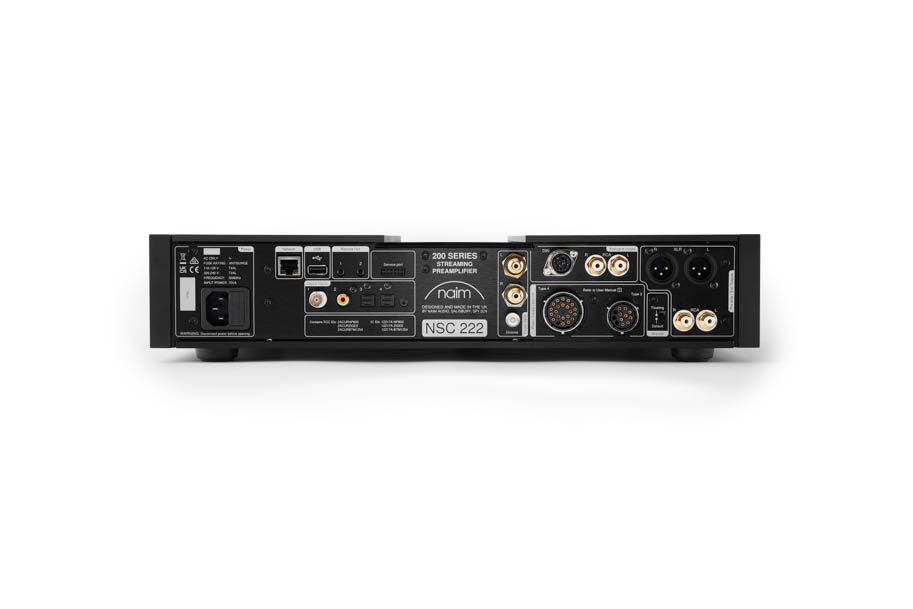
All the controls for the NSC 222 are available on the Focal & Naim app including volume and input selection; most are replicated on the handset that’s supplied with this component but input selection requires scrolling through the options rather than going straight to the desired one. Unused inputs can be turned off to speed up your remote scrolling experience. It has four S/PDIF type digital inputs (coax and optical) and two analogue ones, albeit one uses DIN for legacy Naim components. Meanwhile, the phono input will be of use to anyone with an MM cartridge fitted to their turntable. It would have been nice to see an MC option but the sensitivity to noise of such low level signals means having one onboard would be a compromise. Word on the street has it that there will be a New Classic series phono stage coming soon.
Numbers, numbers
The DAC is specced to cope with a maximum of 32-bit/384kHz PCM and DSD128. Naim, as ever, does not play the numbers game but uses converter chips that sound good rather than have the most impressive specs; an entirely laudable approach.
One of the more controversial aspects of the NSC 222 is that it does not have a DIN output alongside the RCA sockets. Instead there is a pair of XLR connections with a matching pair of Naim’s own XLR terminated cables in the box (with plastic plugs for sound quality reasons). The output is not, however, balanced in the differential sense but pseudo- or impedance balanced. Naim claims that this delivers the noise cancelling benefits of balanced connection but avoids the need for precisely matched transmitter and receiver circuits at either end; if there are timing differences between the pairs this will impair timing overall. This approach also means that signal level is the same as for the single-ended RCA outputs which is useful when bi-amping.
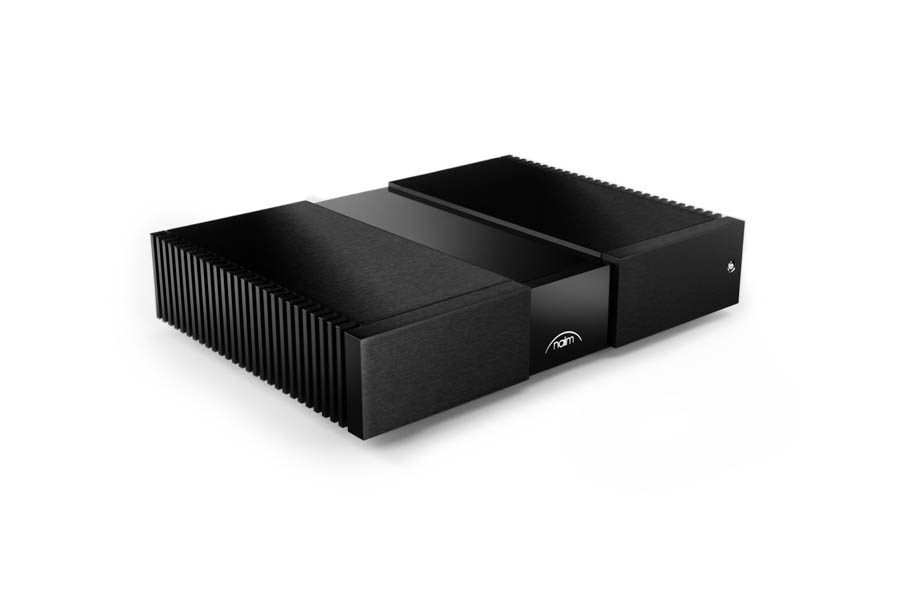
Unlike its predecessor the NAP 250 DR which had a single XLR input for a Naim style connection to the preamplifier the latest NAP 250 has a conventional pair of balanced inputs, making it compatible with pretty well any preamplifer on the planet. It also has a form of trigger connection that uses an optical cable that’s usefully supplied in the box, this means you can turn the whole system on with one button, and that button can even be on the app. All this ease of use must be a shock to the traditional Naim enthusiast but it won’t be long before it’s considered a necessity. The speaker cable terminals will reassure the faithful that all has not changed, these remain 4mm sockets to keep metalwork at a minimum. Naim even supply a pair of plugs for connecting to them which is a handy.
Chilling in the bike shed
Under the lid the NAP 250 still has DR (discrete regulator) tech and a substantial toroidal transformer, it’s also based on the same circuitry but differs from the NAP 250 DR by offering 100W rather than 80W. This has been achieved by adding an extruded ‘bike shed’ section through the casework with a small seven speed fan at the back, this fan will only turn on under extreme conditions but stops the amplifier cutting out under heavy loads. Naim use fans on most of their bigger amps for the same reason but this is the first NAP 250 to have one.
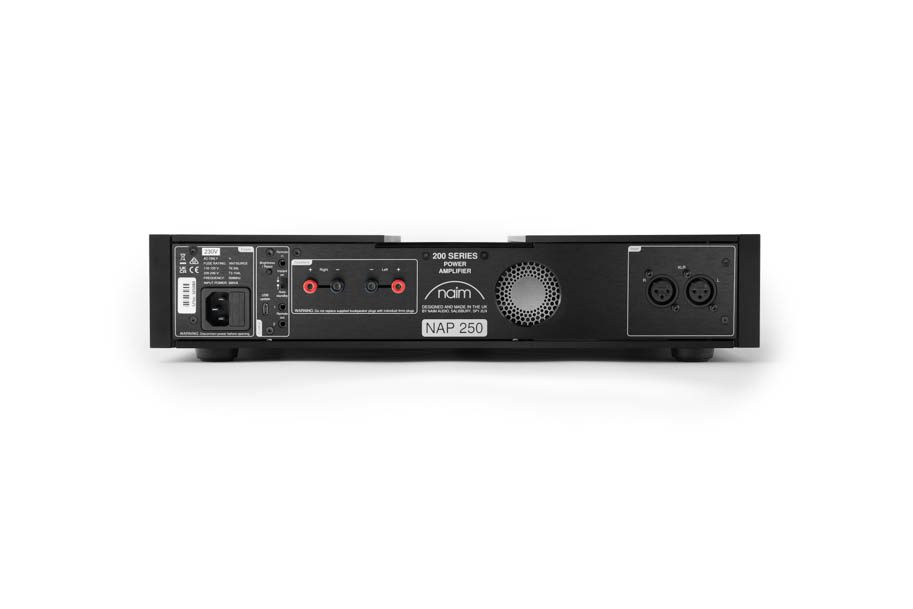
The NSC 222 was hooked up to a Melco N10 server via a Network Acoustics Muon filter and the English Electric 8Switch, and powered by the NPX 300 power supply. I used Naim’s XLR terminated cables to connect the NAP 250 and Townshend Fractal F1 speaker cable to carry signal to a pair of PMC twenty5.26i floorstanding speakers. From there on everything gets a little hazy, but I can say that it was very compelling and quite difficult to put down.
The latest Focal & Naim app is very easy to set up and navigate, you have to tell the NSC 222 that it’s connected by ethernet, but once it knows it doesn’t forget. I also found that my iPad (iOS 15.4) wasn’t able to access Qobuz via the app but my iPhone (iOS 15.6) was fine, it’s a pity I can’t update the former. But the bigger screen made playing from local and external sources very easy so I stuck with it for the most part.
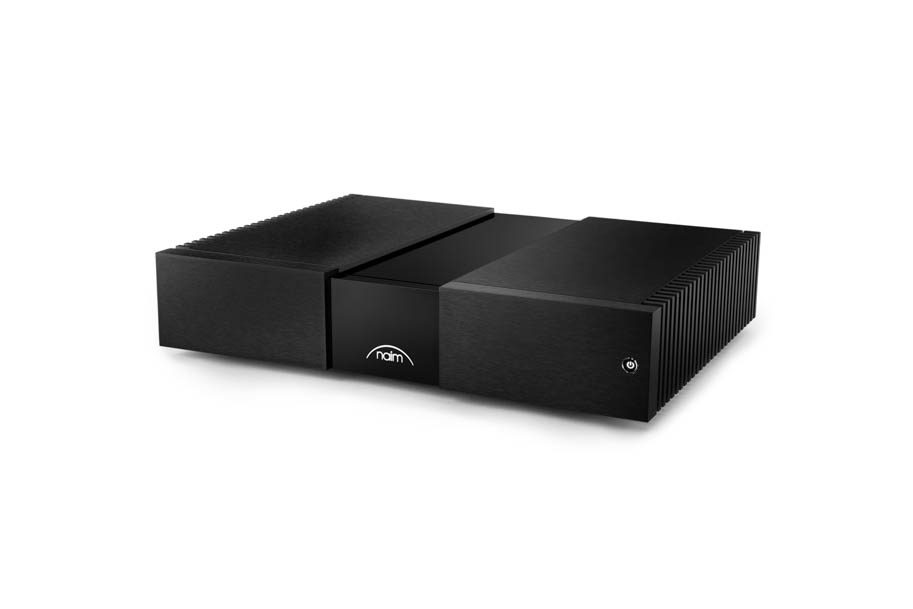
The sound of this trio is more distinctly Naim-like than I recall from the time spent with a NAP 250 DR. The latest NAP 250 is more of a groove monster, it positively revels in a beat and can open up the most dense of musical passages in a way that totally eludes many more powerful designs. It does this so well that albums and tracks that seemed ‘difficult’ in the past suddenly make musical sense. Timing has always been a Naim strength, and this latest combo makes it clear that it has not lost its mojo in this department.
Mojo rising
It’s achieved by separating out the various instruments and voices in a mix yet simultaneously revealing the nature of their integration as a musical unit. Some amplifiers produce a fluent yet slightly amorphous rendition of a band whereas others pick up the fine details of how the various musicians are playing, these Naim components show you what each is contributing but doesn’t let this get in the way of the interplay that produces the synchronicity of the performance. Hard to explain, easy to enjoy, very easy.
All About That Bass
This is at least partly down to the precise way that the NAP 250 deals with bass. It doesn’t sound clinical but bass notes stop and start in a quick but natural fashion. This is not achieved by ignoring low bass either, there is plenty of current available to deliver the weight and power of this critical part of the spectrum, but neither is there any blurring of the attack and decay. The amp is clean and it projects into the room in convincing fashion. Its imaging is not perhaps as three dimensional as other amplifiers but neither is it flat. It’s safe to say that the New Classic amps were voiced for those looking to become immersed in the spirit and flow of the music rather than the sense of aural presence.
If you like guitars, the balance of the NAP 250 will be right up your alley!. It’s not bright but steel strings really come alive in its grasp. Likewise the brass instruments of jazz are beautifully delivered, it’s here that the timing excellence really comes to the fore. Sax and/or trumpet lead pieces can easily become harsh and fatiguing on a revealing system that doesn’t have this level of coherence, in fact some stuff is almost unlistenable to my ears. So it’s a revelation to discover that the problem isn’t the recording, and that it’s possible to enjoy the intensity of Ornette Coleman, John Coltrane and Miles Davis in their full glory without your ears bleeding.
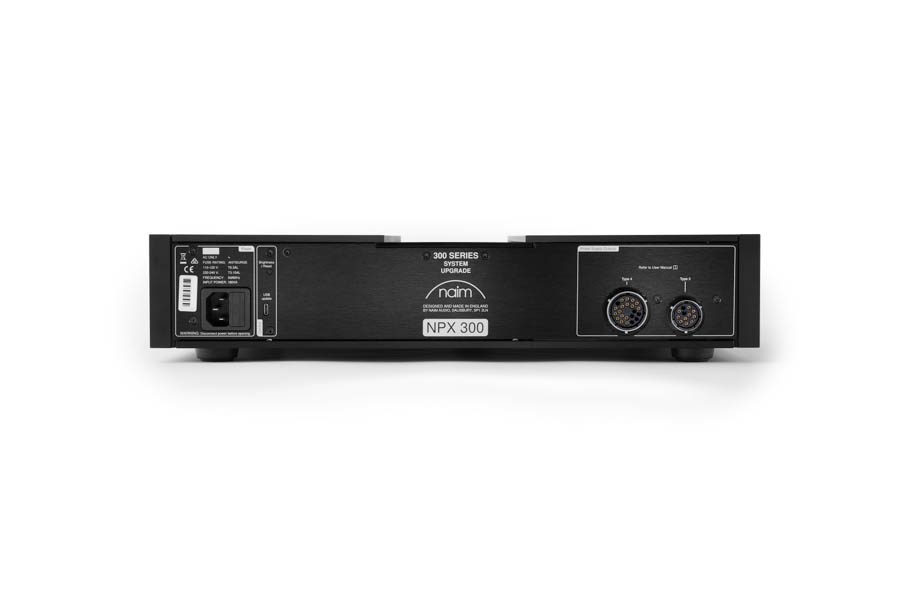
Using the NSC 222 and NPX 300 with my Moor Amps Angel 6 power amplifier produced a richer sonic picture with greater emphasis on image depth. It didn’t match the NAP 250’s rhythmic skills but showed the preamp/streamer to be highly adept on its own by delivering Joe Chamber’s Dance Kobina [Blue Note] in highly engaging fashion. I used this set up to see what the NPX 300 brought to the party, it turns out it brings a lot. The NSC 222 does everything well on its own but adding the separate power supply brings a significant increase in detail resolution. Now low-level sounds are clear and these bring depth and nuance that make the presentation a lot more convincing, so much so that the feeling behind the music is far clearer and the goose bump factor gets very strong. I would suggest NSC 222 buyers live with the internal power supply for a while just so that they get the full impact when adding an NPX 300, it’s quite a thrill. Nothing’s left to chance here; I’m not that ‘into’ headphones, but even I noticed that output is excellent… and identical to the one fitted to the Uniti Atom.
New Classic might look like a facelift, a rather good looking one at that, but it’s far more than that. I would go so far as to say that Naim has gone back to its roots and found the essence of what it was all about in the glory days. The fact that it has been able to do this whilst delivering such a heavily featured and future proof streamer/preamplifier is remarkable. What really matters of course is that this triumvirate produces a sound that will stop you swiping and immerse you in the musical experience, letting you feel the emotions that were recorded in the first place. There are plenty of streamers and amps that produce a spectacular sound but not nearly so many that let you hear what really matters in the music. The Naim NSC 222, NPX 300 and NAP 250 combination gets to the parts that others fail to reach and they do it in a very nicely executed package.
Technical specifications
NSC 222
- Type Solid-state preamplifier, network streamer, DAC
- Analogue Inputs One pair of single-ended inputs (via RCA jacks), one pair of single-ended inputs (via 8-pin DIN), one MM phono input (via RCA jacks)
- Digital Inputs One coaxial S/PDIF (via RCA jack), One coaxial S/PDIF (via BNC), two TOSLink, one USB A
- DAC Resolution/Supported Digital Formats FLAC/WAV/MP3, etc. Sampling rate for D/A conversion upt to 384kHz/32 bit, DSD 128
- Music services/Wi-Fi inputs Google Cast, Airplay 2, Bluetooth aptX, Spotify Connect, Tidal Connect, Qobuz
- Analogue Outputs One stereo pseudo balanced (via XLR connectors), one stereo unbalanced (via RCA jacks), 6.35mm headphone output (1.5W into 16Ω output)
- Frequency Response
- MM -3dB at 10Hz, RIAA +/-0.1dB
Line 3Hz to 40kHz -3dB
Digital 3Hz to 27kHz -3dB - Distortion (THD + Noise)
- Line 0.0025% @2.2V input volume at 0dB,1kHz
(Line 0.015% @2.2V input volume at 0dB, 20kHz)
Digital 0.0035% @0dBFS volume at 0dB, 1kHz - User Interface display (on main unit), Focal & Naim application software, Roon Ready
- Dimensions (H×W×D) 91.5 × 432 × 317.5mm
- Weight 11kg Price £5,700
NAP 250
- Type Transistor stereo power amplifier
- Analogue inputs One pair balanced (via XLR jacks)
- Analogue outputs Two pairs of speaker outputs (via 4mm sockets)
- Power output 100Wpc @ 8 Ohms, 190Wpc @ 4 Ohms
- Bandwidth 1.4Hz-100kHz @-3dV
- Sensitivity 1V to rated power
- Distortion THD+N at 2/3rds full power 8 @1kHz (0.013%)
- Signal to Noise Ratio 111dB
- Dimensions (H×W×D) 91.5 × 432 × 317.5mm
- Weight 16.8kg Price £5,700
NPX 300
- Type external power supply
- Accessories Powerline Lite power cable, Burndy cables
- Dimensions (H×W×D) 91.5 × 432 × 317.5mm
- Weight 14.4kg Price £5,700
Manufacturer
Naim Audio
+44 (0) 1722 426 600
Tags: NAIM AUDIO NAP 250 NPX 300 NSC 222 POWER AMPLIFIER POWER SUPPLY STREAMING PREAMP
By Jason Kennedy
More articles from this authorRead Next From Review
See all
PrimaLuna EVO 100 phono preamplifier
- Apr 22, 2024

Reiki Audio SuperSwitch Master Pro + Servant Pro
- Mar 27, 2024

Melco Audio N1-S38 music server
- Mar 27, 2024








